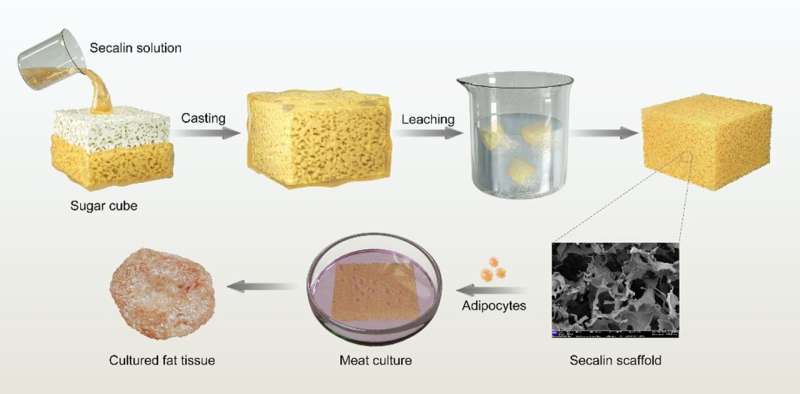Researchers at the National University of Singapore have developed a groundbreaking method for culturing pork fat tissue using protein scaffolds made from rye secalin. This innovative technique could revolutionize the cellular agriculture industry and provide a sustainable alternative to conventional meat production. Cellular agriculture is an emerging field that holds the promise of producing animal-derived products without the need for traditional livestock farming.

Innovating in Meat Production
Researchers at the National University of Singapore (NUS) have come up with a novel method for culturing of pork fat tissue using protein scaffolds from secalin which is a rye protein. This novel concept fills in a major gap in the cellular agriculture industry — the absence of an edible, functional and scalable biomaterials solution that is low-cost and safe.
Researchers at NUS (from left) post-doctoral research fellows Dr Lin Yu Lung and Dr Lu Ying, led by Associate Professor Tan Yen Nee (right foreground). A template-leaching technique they created can rapidly produce secalin scaffold templates with high porosities and the necessary stiffness needed to support pork fat cell growth. The technology of this patent-pending makes it possible to overcome all existing difficulties of making scaffold, and,therefore, the scaffolds are ready at mass-production scale for cultured-meat commercialization.
Sustainable Mild Pork Fat Production
The most important novelty of this study is the use of popular sugar cubes for preparing secalin scaffolds with a sponge-like structure and topological parameters that characterize high pore permeability. The protein scaffolds are ~ 90 % porous and well-proven for the growth of porcine adipose cells. Moreover, the scaffolds were highly stable in water and had good mechanical properties with a compressive modulus of less than 3kPa that is suitable as a substrate for adipose tissue culture.
Specifically, after 12 days of culturing porcine adipose cells in the secalin scaffolds, the pork fat tissue effectively mimicked traditional pork subcutaneous adipose tissue-like properties with respect to appearance, texture, flavor and fatty acid profiles. This development highlights the possibility of commercially viable and environmentally friendly, and more importantly pork lard cultivation leading to the first generation cultured meat products.
Moving towards a Sustainable and Circular Economy
In expectation of large-scale production of it, the researchers are currently testing different ways to improve how that cultured pork fat tastes and now they are working on creating a differentiation medium with high-quality, food-grade ingredients. This could eventually lead to the tailoring of fatty acid composition, generating further nutralicious cultured meat.
This work has broader significance, as Prof. Huang Dejian says: ‘Cereal prolamins are still attractive natural scaffold sources and can be recycled from locally all generated spent grains e.g. spent barley grains’. Our Nature Metabolism study puts forward a straightforward and environmentally sustainable new solution: sugar cubes, which are simple to use as templates for producing large amounts of meat scaffolds, all while supporting the local bio-economy. In addition to the progress it catalyzes within the cellular agriculture space, this model proudly underscores sustainability and resource efficiency as part of our shared environmental goals in a post-pandemic world.
